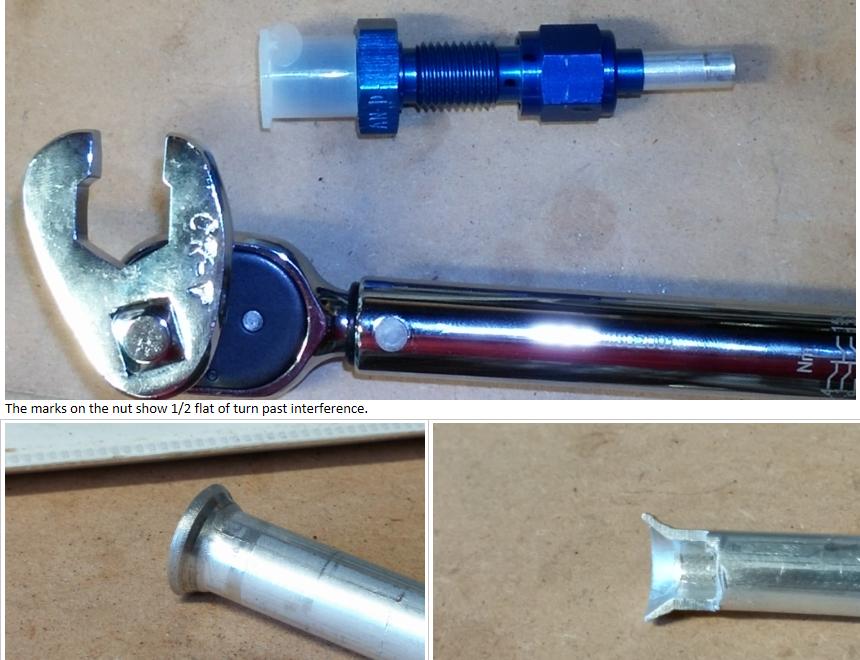spaceflightmeow
Active Member
I'm working on installing the vent tube in the RV-7 fuel tank but I'm puzzled on how to torque the AN818 nut.
The tank vent tube is 1/4" 3003 AL and takes a AN818-4D nut. AC43.13 says to torque the nut to 40-65 in-lbs. I have a 1/4" drive torque wrench (20-150 in-lbs). I need a 9/16" crowfoot in a 1/4" drive, which I cannot find. It seems most crowfoot wrenches are 3/8" drive, but virtually all 3/8" drive torque wrenches can barely get down 65 in-lbs (5.4 ft-lbs).
Also I've seen people tighten the nut so many flats. How many turns is needed for a AN818-4D nut on a 3003 tube?
The tank vent tube is 1/4" 3003 AL and takes a AN818-4D nut. AC43.13 says to torque the nut to 40-65 in-lbs. I have a 1/4" drive torque wrench (20-150 in-lbs). I need a 9/16" crowfoot in a 1/4" drive, which I cannot find. It seems most crowfoot wrenches are 3/8" drive, but virtually all 3/8" drive torque wrenches can barely get down 65 in-lbs (5.4 ft-lbs).
Also I've seen people tighten the nut so many flats. How many turns is needed for a AN818-4D nut on a 3003 tube?





